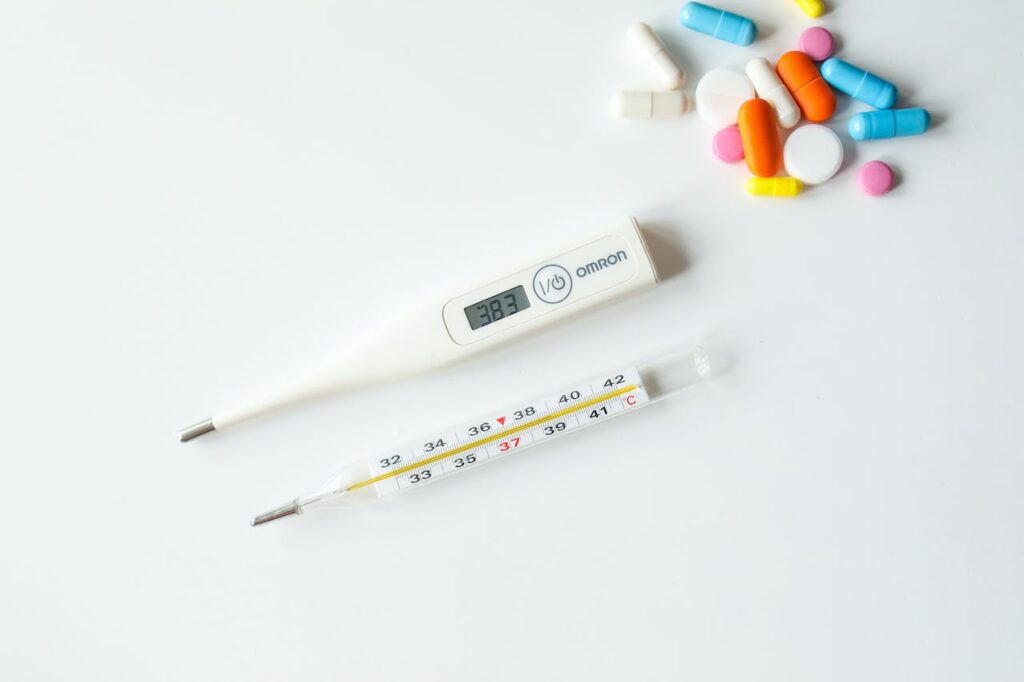Table of Contents

1. Overview of fever
Fever is a common symptom experienced by individuals across the globe and is often associated with illness and infections. However, understanding the science behind fever can provide valuable insight into its causes and symptoms. By delving into the mechanisms of the body’s immune response, we can gain a deeper understanding of fever and its significance in diagnosing and treating various medical conditions. This article aims to explore the science behind fever, shedding light on its causes, symptoms, and the importance of proper management.
2. Understanding the causes of fever
Fever is the body’s normal reaction to disease or sickness. It is primarily triggered by the release of chemicals called pyrogens in the body. These pyrogens stimulate the hypothalamus, the part of the brain responsible for regulating body temperature, to increase the body’s core temperature.
Infections caused by bacteria, viruses, or other pathogens are the most common cause of fever. When the body detects the presence of these invaders, it initiates an immune response, which includes increasing body temperature. This rise in temperature creates an unfavorable environment for the pathogens, as most of them are unable to survive at higher temperatures.
Fever can also be a result of non-infectious conditions such as autoimmune disorders, drug reactions, or even certain cancers. In these cases, the immune system malfunctions, leading to an abnormal increase in body temperature.
Understanding the underlying cause of fever is crucial in diagnosing and treating the underlying condition. In the next section, we will dive deeper into the symptoms of fever and how they can provide valuable information about the body’s health. Stay tuned!
3. Recognizing the common symptoms of fever
Recognizing the common symptoms of fever
When a fever is present, the body goes through various changes that often manifest as symptoms. These symptoms can provide important clues about the underlying cause of the fever and assist in its diagnosis.
One of the primary symptoms of fever is an increase in body temperature. A normal body temperature typically falls within the range of 97-99 degrees Fahrenheit (36-37 degrees Celsius). However, during a fever, the body temperature can rise above this range.
Along with an elevated body temperature, individuals with a fever may experience other common symptoms such as chills, sweating, and generalized weakness or fatigue. These symptoms are often the body’s way of conserving energy and fighting off the infection or illness.
In addition, fever can also be accompanied by specific symptoms that are characteristic of the underlying condition. For example, a sore throat and runny nose may indicate a viral infection, while joint pain and rash may suggest an autoimmune disorder.
By recognizing and monitoring these symptoms, healthcare professionals can gain insights into the nature and severity of the fever, helping them determine the appropriate course of treatment.
Stay tuned for our next section, where we will discuss the various methods of managing fever and when to seek medical attention.

4. When to seek medical attention for a fever
While most fevers are harmless and resolve on their own, there are certain circumstances when seeking medical attention is necessary. Understanding when to consult a healthcare professional can help ensure prompt and appropriate diagnosis and treatment.
One of the key factors to consider is the duration and intensity of the fever. If a fever lasts for more than three days or is accompanied by severe symptoms such as difficulty breathing, persistent vomiting, or extreme lethargy, it is crucial to seek medical help immediately.
In addition, individuals with a weakened immune system, such as those undergoing chemotherapy or with chronic illnesses like diabetes, should be vigilant about monitoring their fever. Any temperature rise in these individuals should be promptly reported to a healthcare provider.
Finally, if a fever occurs in infants younger than three months, it is considered a medical emergency. Infants at this age have immature immune systems and are at a higher risk of serious infections.
Remember, it is always better to err on the side of caution when it comes to fever, especially if you fall into any of these high-risk categories. Consult with a healthcare professional who can provide guidance and ensure your well-being. Stay informed for our next blog section, where we will discuss effective ways to manage and reduce fever at home.
5. Treating and managing fever at home
Treating and managing fever at home can help alleviate discomfort and promote a faster recovery. Here are a few viable procedures you can attempt:
1. Remain hydrated: Fever can cause parchedness, so drinking a lot of fluids is significant.. Water, clear broths, herbal teas, and electrolyte solutions can all help replenish the body’s fluid levels.
2. Rest and get enough sleep: Give your body the rest it needs to fight off the infection. Adequate sleep can help boost your immune system and aid in the recovery process.
3. Dress comfortably: Wear lightweight, breathable clothing to help regulate body temperature. Avoid excessive layering, as it can trap heat and raise body temperature further.
4. Use over-the-counter medications: Non-prescription fever reducers like acetaminophen or ibuprofen can help lower body temperature and provide relief from associated symptoms. However, always follow the recommended dosage and consult a healthcare professional if you have any concerns or other health conditions.
Remember that these home remedies are meant to complement proper medical care, not replace it. If your fever persists or worsens, or if you have any underlying health conditions, consult with a healthcare professional for a comprehensive evaluation and individualized treatment plan.
Stay tuned for our next blog section, where we will explore natural remedies and lifestyle changes that can help manage and reduce fever.

6. Preventing the spread of fever
:
In addition to managing and treating fever, it’s equally important to take steps to prevent the spread of infection and protect others around you. Here are a few down to earth estimates you can execute:
1. Practice good hand hygiene: Regularly wash your hands with soap and water for at least 20 seconds, especially after coughing, sneezing, or using the bathroom. On the off chance that cleanser and water are not accessible, utilize a hand sanitizer that contains something like 60% liquor.
2. Cover your nose and mouth: When coughing or sneezing, use a tissue or your elbow to cover your nose and mouth. This can assist with keeping respiratory drops from spreading to other people.
3. Dispose of used tissues properly: After using a tissue, immediately throw it in a lined trash can and wash your hands.
4. Stay home when you are sick: If you have a fever, it’s important to stay home from work, school, and other public places until your fever has resolved for no less than 24 hours without the utilization of fever-diminishing meds. This can assist with forestalling the spread of the disease to other people.
By following these preventive measures, you can reduce the risk of transmitting the illness to those around you and contribute to protecting the health and well-being of your community. In the next blog section, we will explore some natural remedies and lifestyle changes that can help manage and reduce fever. Stay tuned!

7. Conclusion: Stay informed and take care
Conclusion: Stay informed and take care
In order to better understand and manage fever, it’s crucial to stay informed about the causes and symptoms. By practicing good hand hygiene and adopting preventive measures, we can help prevent the transmission of infections and protect those around us. Avoiding contact with others when we have a fever is essential to prevent the spread of illness.
In the next blog section, we will delve into some effective natural remedies and lifestyle changes that can help manage and reduce fever. These methods can be used in conjunction with medical treatment to alleviate symptoms and promote a faster recovery. Stay tuned for some valuable tips on how to handle fever naturally. In the meantime, remember to stay informed, take care of yourself, and prioritize the health and well-being of your community.


